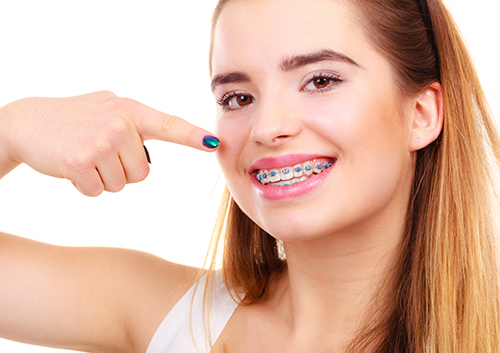Braces-Friendly School Lunches
October 12th, 2022

If your pre-teen or teenager is home for the summer, it’s easy to provide braces-friendly lunch options. The school lunchroom, though, presents another challenge altogether. What menu selections are most compatible with braces? And what can you put in that lunch box or brown bag to provide a tempting, healthy lunch during school hours? Let’s look at some options!
From the Cafeteria
Encourage your student to stick with soft foods that don’t require biting into. Some good choices include:
- Soup, either creamy or with soft vegetables
- Salads without crunchy vegetables or croutons
- Soft, shredded chicken or beef
- Egg or tuna salad
- Tofu
- Pasta
- Meatloaf
- Macaroni and cheese
- Soft casseroles
- Steamed vegetables
- Mashed potatoes
- Soft breads or tortillas
Bringing a Lunch?
There are many great options for packing a lunch bag! Just remember to keep foods at the proper temperature, with insulated containers for hot foods and two cold sources, such as two frozen gel packs, for cold foods.
- Sandwiches with soft filling (no chunky peanut butter!) on soft bread. Thinly sliced, easy to chew cold cuts will work, but cold cuts like salami are too chewy. Cut the crusts off if necessary. Cutting sandwich wedges into smaller portions will also make them easier to eat.
- Hard boiled eggs
- Hummus and soft pita wedges
- String cheese and soft crackers
- Applesauce
- Yogurt
- Soft fruits such as berries or bananas
- Jell-O or other gelatin dessert cups
- Pudding cups
When to Say “No, Thank You”
If you have to bite into it, if it’s chewy, or if it’s crunchy, it’s best to choose something else! Here are some common culprits when it comes to broken brackets and wires:
- Caramel
- Hard candy
- Popcorn
- Whole carrots
- Whole apples
- Hard rolls
- Pizza
- Corn on the cob
And remember to send your child to school with a brush and floss to clean teeth and braces after lunch. Dental hygiene is very important now, because brackets and wires can both trap food particles and make brushing them away more difficult. This can lead to increased plaque, cavities, and staining around the area of the braces. If it’s impossible to brush, be sure to remind your student to rinse thoroughly with water after eating.
Lunch hour should be a time to relax, get together with friends, and recharge for the rest of the school day. Talk to us about the most (and least) braces-friendly foods and recipes. By learning what foods to avoid and adjusting some old favorites, your school-age child can continue to enjoy healthy, tasty lunches. Most important, visiting Cooper, Ford S. at our Charlotte, NC or Spartanburg, SC office for an emergency repair will not be on anyone’s list of afterschool activities!




 Website Powered by Sesame 24-7™
Website Powered by Sesame 24-7™